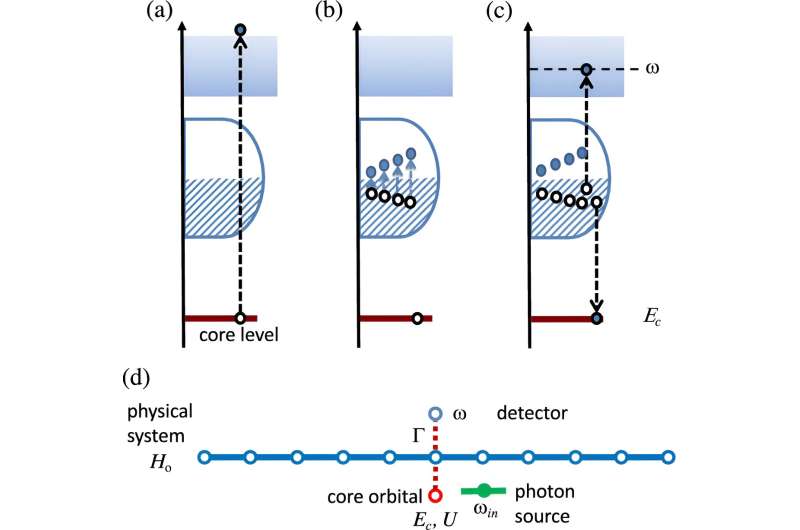This article has been reviewed according to Science X's editorial process and policies. Editors have highlighted the following attributes while ensuring the content's credibility:
fact-checked
trusted source
proofread
Unlocking the full potential of Auger electron spectroscopy

Auger electron spectroscopy (AES) is an incredibly useful technique for probing material samples—but current assumptions about the process ignore some of the key time-dependent effects it involves. So far, this has resulted in overly-simplified calculations, which have ultimately prevented the technique from reaching its full potential.
In a study published in The European Physical Journal Plus Alberto Noccera at the University of British Columbia, Canada, together with Adrian Feiguin at Northeastern University, United States, developed a new computational approach which offers a more precise theoretical description of the AES process, while taking its time dependence into account. Their method could help researchers to improve their quality of material analysis across a wide array of fields: including chemistry, environmental science, and microelectronics.
In the Auger process, an inner-shell electron is initially kicked out of its atom, often through an impact with an energetic light pulse. Afterward, the vacancy it leaves behind is filled by an outer-shell electron.
As this electron jumps between shells, some of its excess energy is imparted to another outer-shell electron, which is subsequently ejected from the atom as an Auger electron. Since the energy spectra of Auger electrons depend heavily on atomic structures, AES can be used as an accurate probe of elemental composition in material samples.
Currently, it is generally assumed that the energy imparted on the atom during the process is instantly redistributed after the initial inner-shell electron is ejected. However, this ignores the movements of the electrons surrounding the initial vacancy in the time following the ejection, and how this process varies with the duration of the initial light pulse.
In their study, Noccera and Feiguin developed a more sophisticated computational approach: considering how electron charges and excitations are rearranged over time with varying light pulse durations, and the resulting effect on energy redistribution throughout the atom.
In turn, the duo provides a more accurate picture of the Auger electron's energy spectrum. After testing their approach on a model system, they are now confident that it could help researchers in future studies to unlock the full potential of AES.
More information: Alberto Nocera et al, Auger spectroscopy beyond the ultra-short core-hole relaxation time approximation, The European Physical Journal Plus (2023). DOI: 10.1140/epjp/s13360-023-04717-4
Provided by SciencePOD




















